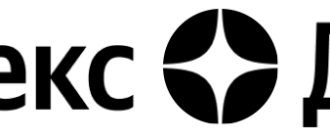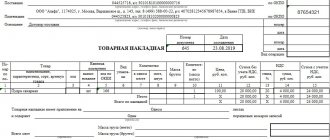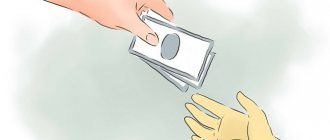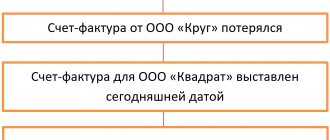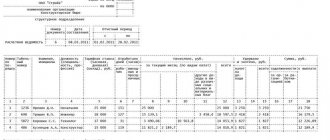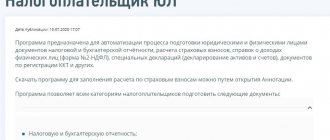Current codes for 2021
The transaction type codes in the purchase book valid for the current year are as follows:
- 01 – purchase or gratuitous transfer of products, works or rights to property;
- 02 – full or partial payment for future deliveries of products, work or rights to property, in particular those operations that are carried out on the basis of agency and commission contracts;
- 06 – operations carried out by tax agents;
- 10 – transfer of products or rights to property, performance of work free of charge;
- 13 – work performed by contracting companies;
- 14 – transfer of rights to property, which are specified in article No. 155, in paragraphs 1 to 4;
- 15 – generation or receipt of an invoice by an agent or commission agent;
- 16 – the merchant received products returned by a consumer who is not recognized as a VAT payer;
- Transaction type code 17 in the purchase book – the merchant received the products, which were returned by the individual;
- 18 – generation or receipt of an adjustment invoice due to a change in the price of shipped products;
- 19 – import of products to Russia from the EEC;
- 20 – import of products into Russia from abroad for subsequent processing or domestic consumption;
- Code 21 in the purchase book – transactions related to the restoration of tax amounts, as well as those transactions that are taxed at a rate of 0%;
- 22 – operations related to the return of advance payments;
- 23 – purchase of services that are issued by BSO;
- 24 – entering invoices into the purchase book in cases provided for in Articles 165 and 171 of the Tax Code of the Russian Federation;
- Code 25 in the purchase book - registration of invoices in the purchase book in relation to the VAT amounts restored earlier;
- 26 – generation by the merchant of invoices and primary accounting documentation, which contains summary data on transactions carried out during the month or quarter;
- 27 – generation of one invoice based on several when selling or purchasing products;
- 28 – generation of one invoice based on several upon receipt of full or partial payment for future deliveries of products;
- 29 – adjustment of the sale of products or transfer of rights to property;
- 30 – shipment of products in relation to which VAT was calculated during customs declaration;
- 31 – payment of VAT calculated during customs declaration of products;
- 32 – paid VAT or VAT payable was accepted for deduction.
Acceptance of VAT for deduction when offsetting the buyer's advance payment
Entries in the sales book with code 26 are made using consolidated papers (invoices, strict reporting forms). When entering records with KVO 26 into the sales book, it is necessary to register: the number and date of registration of the invoice or other document evidencing the transaction, the price with and without VAT, as well as the amount of VAT.
Code 26 is noted in the sales book. It is allowed to indicate in the purchase book a corresponding entry with transaction type codes 16, 17, 22.
OJSC Globus (TIN/KPP 8808******/880808008) sold products in August 2015 to persons who were exempt from fulfilling their duties as taxpayers. In the sales book, the company accountant registers a consolidated document with KVO 26 for a total amount of 2,000,000.00 rubles, including VAT - 305,084.74 rubles.
Important Feature
Companies should also take into account that in 2021, the mandatory introduction of online cash registers for most individual entrepreneurs and enterprises has introduced corresponding amendments to the rules for registering a sales book.
For example, if an individual entrepreneur or organization sells products for cash using new cash registers (online cash registers), then the Z-report (final report for cash registers equipped with EKLZ) will no longer be able to serve as a basis for recording transactions with code 26 be provided.
The reason for this is that the online cash register is not equipped with an ECLZ: instead, it has a modified memory module - a fiscal drive.
Dear readers, the information in this article may be out of date. If you want to find out how to solve your particular problem, call:
- Moscow: 7(499)350-6630.
- St. Petersburg: 7(812)309-3667.
Or on the website. It's fast and free!
From 01/01/2019, the VAT rate will increase from 18% to 20%, and the estimated tax rate will also change from 18/118 to 20/120 and from 15.25 to 16.67% (law dated 08/03/2018 No. 303-FZ). Business operations in connection with such innovations are not interrupted, and in 2021 suppliers continue to receive advances from buyers for shipments that will occur a few weeks or months later - already in 2019. When registering books of purchases and sales, the same transaction type codes are used as in 2021.
Let us explain the procedure proposed by the Federal Tax Service using an example.
276,000 × 18/118 = 42,101.69 rubles.
233,898.31 × 20% = 46,779.66 rubles.
VAT accrued on prepayment in November 2021 was accepted for deduction in the amount of RUB 42,101.69.
Transactions with VAT from the buyer PJSC "Service Center":
- after the prepayment is transferred, VAT in the amount of RUB 42,101.69 is accepted for deduction;
- after receiving the furniture, tax in the amount of RUB 46,779.66. accepted for deduction with the simultaneous restoration of VAT in the amount of 42,101.69 rubles. with prepayment.
Find out what a taxpayer should do if an additional 2% VAT is paid due to an increase in the tax rate from this publication.
An invoice for shipped goods is issued using the Issue invoice button located at the bottom of the Sales document (act, invoice).
The document Invoice issued is automatically filled with data from the Sales document (act, invoice).
Find out more about VAT calculation when selling goods in wholesale trade
The organization has the right to accept VAT as deduction from advances received from customers as of the date (clause 5 of Article 171 of the Tax Code of the Russian Federation):
- offset of the advance, i.e. during the period of sale of goods (works, services) to the buyer;
- refund of the advance due to changes in conditions or termination of the contract.
VAT is deducted in the amount of tax calculated from the cost of shipped goods (work, services), for which an advance payment was previously received (clause 6 of Article 172 of the Tax Code of the Russian Federation). This means that if you have charged VAT on advances at a rate of 18/118%, and goods are shipped at a rate of 10%, then only that part of the VAT that is calculated at a rate of 10/110% can be taken into account (Letter of the Ministry of Finance of the Russian Federation dated November 28. 2014 N 03-07-11/60891).
For the amount of VAT accepted for deduction:
- in the purchase book, a registration entry is made of the advance invoice, on which VAT was previously calculated, with the transaction type code 22 {amp}amp;#171;Advances received{amp}amp;#187;;
- in accounting, the entry Dt 68.02 Kt 76.AB {amp}amp;#171;VAT on advances and prepayments{amp}amp;#187; is generated.
Actions if you make a mistake in the code
If the transaction type code in the purchase book is incorrect, you need to do the following:
- Carefully correct the code written incorrectly.
- Fill out additional sheet for a specific operation with the correct code value.
Similar articles
- Transaction type code in the purchase book 2018
- Operation type code 2018
- Transaction type code in the sales book 2018
- Transaction code in the VAT return
- Transaction type code in the sales book
When to use UPD
The universal transfer document (UDD) is used simultaneously to account for expenses (instead of an invoice or work acceptance certificate) and VAT calculations (as an invoice).
UPD can be issued during the shipment of goods, acceptance and transfer of services provided and results of work performed, transfer of property rights.
Just like an invoice, the UTD can be transmitted to the tax office electronically via telecommunication channels.
The form and recommendations for the UPD can be taken from the letter of the Federal Tax Service dated October 21, 2013 No. ММВ-20-3/ [email protected] The electronic format of the UPD is established by the order of the Federal Tax Service dated December 19, 2021 No. ММВ-7-15/ [email protected]
The main part of the UPD is the invoice. This part of the document is filled out according to the rules approved by Decree of the Government of the Russian Federation of December 26, 2011 No. 1137.
For the part related to the primary account, the details established by paragraph 2 of Article 9 of the Accounting Law are mandatory.
Read in the berator “Practical Encyclopedia of an Accountant”
List of mandatory details that the primary document must contain
Among the mandatory details of the UPD are measures of a business transaction in physical and (or) monetary terms, indicating units of measurement.
Transaction type code in the purchase book 2021: examples of selection
The introduction of new codes has led to some confusion in company accounting. For example, some organizations mistakenly enter VAT code 22 in the purchase book instead of the correct value “02”. Others use the obsolete "03".
The Federal Tax Service analyzes the codes chosen by companies to determine whether the latter are legally reducing VAT. The logic is transparent: if a client enters code 01 in the purchase book for a specific transaction, then the supplier who shipped the goods must have the same value entered in the sales book.
To understand what codes are entered in the purchase book, you need to analyze situations using examples. So, if the supplier shipped the goods to the buyer on account of a previously received deposit, the previously accrued tax on the advance payment is indicated with code 22 in the purchase book. The tax authorities will check that this amount was previously reflected in the sales book under code 02.
In real life, a situation is possible where counterparties initially agreed on one price and then agreed on a discount. Within five days of this decision, the supplier must issue an adjustment invoice with the reduced price. If the buyer is a VAT payer, the supplier uses code 18 in the purchase ledger to complete the transaction. The legislation also allows it to be replaced with the value “01”.
Transaction type code 17 in the purchase ledger is used by retailers to record a cash receipt against which a refund was made to the customer.
Transaction type code 19 in the purchase book is used by importers from EAEU countries who register a document that replaces an invoice - an import application. The value “06” in the second column of the code is indicated by tenants renting premises from government agencies. So they reflect the deduction of VAT transferred on agency obligations. The posting is made in the period when the tax was actually transferred.
How are services measured?
There is no service unit code in the unit of measure classifier. Therefore, when providing services, many put down code 796, which refers to pieces.
But a service is an activity whose results do not have material expression (clause 5 of Article 38 of the Tax Code of the Russian Federation). Therefore, services are not measured in units.
At the same time, the UPD form serves, among other things, as the basis for customers to accept VAT amounts for deduction. Therefore, the UPD must indicate the quantity (volume) and unit of measurement of what is being sold, as well as the price (tariff) per unit of measurement (subclause 6, clause 5, article 169 of the Tax Code of the Russian Federation). But only if there is an opportunity for this.
If this is not possible, dashes must be placed in the “unit of measurement” and “quantity” columns (subparagraph “b”, paragraph 2 of the Rules for filling out an invoice, approved by Resolution No. 1137). The Ministry of Finance has repeatedly pointed this out (see, for example, letter dated June 5, 2015 No. 03-07-09/32579, etc.). The courts agree (see, for example, the resolution of the Administrative Court of the North Caucasus District dated March 18, 2021 No. F08-1159/2016). And the price (tariff) per unit of measurement is the price of the service provided according to the price list.
Therefore, there is no need to guess. If the goods (works, services) being sold are measured in units that are not specified in the Classifier of Units of Measurement, then dashes are placed in the corresponding columns of the invoice or UPD.
Transaction type code in the purchase book: selection criteria
To select a code, you must refer to Tax Service Order No. ММВ-7-3/ [email protected] , effective from 2021. This list contains 24 positions. To find the one you need, you need to read the descriptions given for each value.
When an accountant enters invoice data, he can use the following values in column 2:
- 01 – acquisition of products and rights, provision of services by the supplier. Transaction type code 01 in the purchase book also applies to transactions for which a 0% VAT rate is provided, and to transactions within the framework of intermediary agreements.
- 02 – transfer to the supplier of an advance (full or partial) on account of expected shipments.
- 06 – purchases made by a tax agent, referred to in Art. 161 Tax Code of the Russian Federation.
- 13 – acceptance of work carried out by development companies or other organizations related to the construction of buildings and their bringing into line with the requirements of the time.
- 16 – return of previously shipped products to the supplier, made by an organization or individual entrepreneur using a special tax regime (STS, UTII).
- 22 – deduction of VAT from previously received advance payment at the time of shipment of goods (provision of services) or return of the deposit.
To register documents other than invoices in the Book, the following codes are used:
- 23 – receiving BSO. Code 23 in the purchase book is acceptable if the purchase of goods and services is documented using a strict reporting form. It can be issued by companies and individual entrepreneurs that do not use a cash register.
- 27 – an invoice made up of several primary documents, issued by an agent.
- 28 – consolidated invoice for advance payment from the agent.
- 01 – making a property contribution to the authorized capital of a legal entity.
Transaction type code 03 in the purchase book, which was previously used to reflect the return of goods to the seller made by a VAT payer counterparty, was abolished by the tax service in 2021. Instead, it is necessary to indicate the value “01” in the second column of the code.
Units of measurement in an electronic invoice (ESI)
the wrong units are entered in an electronic invoice?
, which were expected, and this only becomes clear when viewing the document on the portal? Have you received ESF from suppliers with “strange” units of measurement? In this article we will try to figure out why this happens and how to avoid such mistakes.
The unit of measurement of the sold product/service is indicated in column 5 of section G
ESF.
When filling in the column on the portal, we see the clear name “Piece”, “Kilogram”, etc. Moreover, the required value is selected from the drop-down list, that is, it will not be possible to indicate a unit that is not in it
.
This happens because the ESF IS uses its own reference book of units of measurement, to which the taxpayer cannot add new values. The user may use only those units of measurement contained in this reference book.
You can view the full list of its elements using the menu item Directories – Units of Measurement
.
This classifier combines data from the international classifier (MKEI) and the national classifier (OKEI). But, in addition to standard and well-known units, you can also find non-standard ones in it, which are not found in either MKEI or OKEI: “Page”, “One capsule”, etc.
It can be assumed that these elements were included in the general classifier of the ESF IS at the request of taxpayers. Therefore, if the reference book does not contain the unit you need, then you can try contacting the ESF IS support service with a request to add a new value and justify the need.
Pay attention to the column Unit code
(first column of the directory).
This is a three-digit unique digital code.
The source of the problem, described at the beginning of the article, is that the ESF document does not actually store the name of the unit, but its code
.
For example, if we export ESF from the ESF IS portal to a file and look at the contents of the file, we will not find any “pieces” or “tons” in it. The file (and the ESF IS database) stores unit codes. Important
That is, when viewing a document on the portal, the portal shows us the name of the unit of measurement according to the classifier, but in the database and in the ESF file it stores only the numeric code of the unit!
The problem arises when the supplier writes out the ESF from its accounting system, in which the unit of measure classifier is not configured or is configured incorrectly
.
For example, in the accounting system in the classifier for the unit of measurement “pieces”
001
was entered incorrectly .
The user writing out the ESF will think that he indicated “pieces” in the document (after all, in his accounting system 001 means pieces), but the portal will receive a document in “units of measurement with code 001”. The ESF IS will accept such a document and display to the recipient the name of the unit with code 001 according to its classifier
, and these will not be “pieces” at all, but in this case “nanometers” (because in the ESF IS classifier, code 001 corresponds to “nanometers”).
Therefore, if a problem arises, the buyer needs to contact the supplier with a request to correct the previously issued document by correctly filling in the unit codes
In 1C accounting systems, the code of the unit of measurement for IS ESF is specified in the classifier of units of measurement in the field dedicated for this Code (ESF)
.
The correct code value to indicate in this column can be found in the Units of Measurement
on the ESF IS portal.
IS ESF codes of some standard units of measurement are given in the table.
| Code in IS ESF | Unit name measurements. | Short name |
| 796 | Thing | PC |
| 778 | Package | pack |
| 5114 | One service | |
| 356 | Hour | |
| 163 | Gram | G |
| 166 | Kilogram | kg |
| 168 | Ton Metric ton (1000 kg) | T |
| 112 | Liter Cubic decimeter | l dm3 |
| 113 | Cubic meter | m3 |
| 008 | Kilometer Thousand meters | km 1000 m |
| 006 | Meter | m |
| 18 | Linear meter | |
| 055 | Square meter | m2 |
| 059 | Hectare | ha |
| 061 | Square kilometer | km2 |
You can view a complete list of all unit codes in the ESF IS here.
For additional control, when issuing an electronic invoice in 1C, the user is shown both the numeric code of the unit of measurement and its name.
Keep in mind that the name of the unit in the accounting system is shown “for reference”, that is, there is no need to change or correct it (this will not affect anything). Attention must be paid to the numeric code
, especially if this is your first time writing out a document with such a unit of measurement.
Unit code
In column 2 of the UPD table corresponding to the invoice, indicate the code of the unit of measurement. Column 2a contains its symbol. In column 3 – quantity (volume).
Data on units of measurement are taken from the All-Russian Classifier of Units of Measurement OK 015-94 (MK 002-97) (approved by Gosstandart Resolution No. 366 of December 26, 1994).
For example, code 796 refers to the unit of measurement “piece” (denoted “piece”), 006 – “meter” (“m”), 657 – “product” (“izd”), etc.
But what if the classifier does not contain the designation you need?
Transaction codes in the VAT return - old and new
The Federal Tax Service of Russia announced which codes to use when filling out a VAT return for new transactions not subject to VAT, and in case of tax restoration.
Recovered VAT in the declaration
From 01/01/2015 it is necessary to restore the “input” VAT accepted for deduction when purchasing on the territory of the Russian Federation or when importing into the territory of the Russian Federation:
- sea vessels,
- inland navigation vessels,
- vessels of mixed (river - sea) navigation,
- aircraft and engines for them,
if such fixed assets are subsequently used for operations not subject to VAT on the basis of paragraph 2 of Article 170 of the Tax Code of the Russian Federation (subsection 3, paragraph 2, paragraph 3 of Article 171.1 of the Tax Code of the Russian Federation).
The restored tax should be reflected in the VAT return submitted for the last quarter of each calendar year of ten years, starting from the year in which the accrual of “tax” depreciation began (clause 4 of Article 171.1 of the Tax Code of the Russian Federation).
The Federal Tax Service of Russia reported that the VAT restoration operation must be indicated in Appendix 1 to Section 3 of the declaration. Moreover, before making changes to the declaration, when filling out line 030 of Appendix 1 to Section 3, you can use the existing code 1011800. Or you are allowed to indicate codes planned for approval:
- code 1011806 - for sea vessels, inland navigation vessels, mixed (river - sea) navigation vessels;
- code 1011807 – for aircraft;
- code 1011808 – for aircraft engines.
Non-taxable transactions in the declaration
From 01.10.2016 to 31.12.2018 inclusive, the sale of waste paper on the territory of the Russian Federation is exempt from VAT taxation (subclause 31, clause 2, article 149 of the Tax Code of the Russian Federation). For VAT tax purposes, waste paper means:
- paper and cardboard production and consumption waste;
- rejected and out-of-use paper, cardboard, printed products, business papers, including documents with expired shelf life.
In addition, from 01.10.2016 to 31.12.2020 inclusive, the sale (transfer for one’s own needs) and import of the following into the territory of the Russian Federation are exempt from VAT:
- breeding animals and birds,
- their semen (sperm), embryos and breeding eggs
This is stated in subparagraph 35, paragraph 3 of Article 149 and in paragraph 19 of Article 150 of the Tax Code of the Russian Federation.
As a general rule, transactions that are not subject to taxation (exempt from taxation), transactions that are not recognized as an object of VAT taxation, are subject to reflection in section 7 of the declaration (section XII of the Procedure for filling out a tax return for value added tax, approved by order of the Federal Tax Service of Russia dated October 29, 2014 No. ММВ-7-3/ [email protected] ).
The Federal Tax Service of Russia reported that before making changes to the declaration, when filling out column 1 of section 7, you can use code 1010200. Or you can use codes planned for approval:
- code 1010230 – for operations for the sale of waste paper;
- code 1010233 - for operations for the sale of breeding material and its import into the territory of the Russian Federation.
